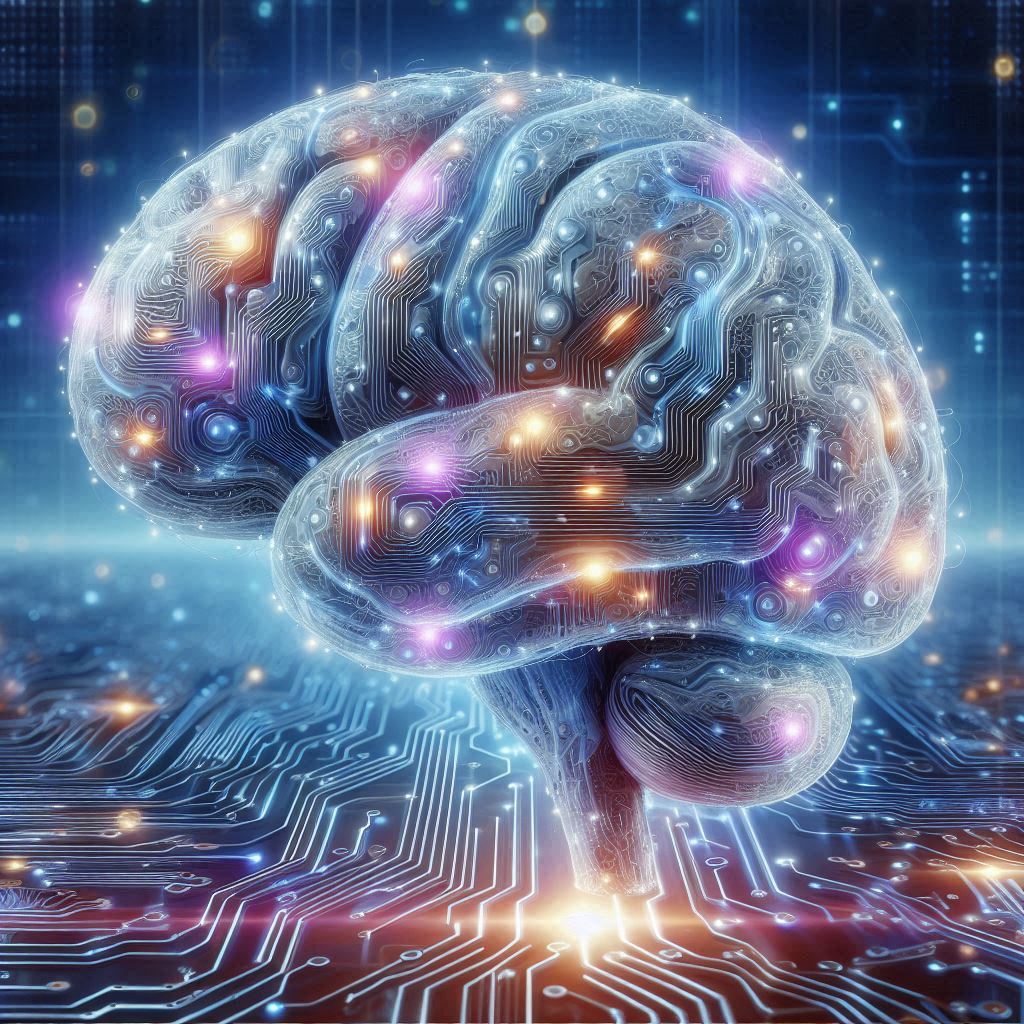Artificial Intelligence (AI) has evolved from a speculative idea of science fiction into one of the most transformative forces in modern science, technology, and society. As it continues to revolutionize industries and reshape the way humans live, work, and interact, AI is also profoundly influencing the field of psychology—the scientific study of the human mind and behavior. The intersection of AI and psychology is not only producing new tools for research and therapy but also prompting deep philosophical questions about cognition, consciousness, emotion, and what it truly means to be human.
For centuries, psychology has sought to understand the nature of the human mind—its functions, its mysteries, and its limits. Today, artificial intelligence is helping to model, simulate, and even enhance human cognitive processes, offering new ways to analyze mental health, predict behavior, and personalize treatment. But this collaboration also raises important ethical, social, and existential questions. Can machines think? Can they understand emotions? And how will AI change our understanding of ourselves?
To explore these questions, it is necessary to examine how AI is influencing the core domains of psychology—cognitive science, behavioral research, clinical therapy, neuroscience, and even philosophy of mind. AI and psychology are no longer separate disciplines; they are converging into a new science of intelligence, both artificial and biological.
The Origins of AI and Its Psychological Roots
Artificial intelligence was not born in isolation. From its earliest days, AI was deeply influenced by psychology, cognitive science, and neuroscience. In the 1940s and 1950s, as computers were being developed, scientists like Alan Turing, Warren McCulloch, and Walter Pitts began to explore the possibility that human thought could be modeled as a computational process.
Turing’s famous 1950 paper, Computing Machinery and Intelligence, posed the provocative question: “Can machines think?” His proposed method—the Turing Test—sought to determine whether a machine could exhibit intelligent behavior indistinguishable from that of a human. This marked one of the first explicit links between psychology and artificial intelligence, as it required defining intelligence and consciousness in terms of observable behavior and cognitive responses.
At the same time, cognitive psychology was emerging as a major scientific field. Psychologists such as George Miller, Donald Broadbent, and Ulric Neisser began to describe the human mind as an information-processing system, comparing perception, memory, and reasoning to computational processes. This “cognitive revolution” provided the theoretical framework that shaped the development of AI, as researchers attempted to design machines that could replicate human-like functions—perception, learning, problem-solving, and decision-making.
In many ways, AI was conceived as an experimental branch of psychology. Early AI systems attempted to simulate human reasoning using logical rules, mirroring how psychologists described mental operations. Neural networks, which today power modern machine learning systems, were inspired by models of biological neurons in the brain. This shared foundation established a lasting relationship between AI and psychology that continues to evolve.
Cognitive Modeling and the Simulation of Thought
One of the most direct connections between AI and psychology lies in cognitive modeling—the use of computational systems to simulate human mental processes. Cognitive models attempt to replicate how people perceive, learn, remember, and make decisions. These models serve as both tools for understanding human cognition and as prototypes for developing intelligent machines.
Early cognitive architectures such as ACT-R (Adaptive Control of Thought–Rational) and SOAR were designed to model general human intelligence by simulating processes like memory retrieval, attention, and problem-solving. These systems drew from psychological theories to predict human performance in various tasks, from language comprehension to decision-making under uncertainty.
Modern AI continues this tradition using neural networks and deep learning. For instance, recurrent neural networks (RNNs) and transformer models used in natural language processing are computational analogues of how the brain processes sequences and context. By studying how these systems learn and generalize, psychologists gain new insights into human cognition—especially in areas like pattern recognition, memory encoding, and learning mechanisms.
Conversely, AI systems themselves have benefited from psychological insights. Reinforcement learning, a foundational concept in AI, was inspired by behavioral psychology, particularly by B. F. Skinner’s work on operant conditioning. The idea that learning occurs through trial and error, guided by rewards and punishments, translates directly into algorithms where artificial agents optimize their actions based on feedback.
The interplay between AI and cognitive psychology is therefore mutually reinforcing: AI provides models to test psychological theories, while psychology provides conceptual frameworks that guide the development of more human-like AI systems.
AI and the Study of Emotion
While traditional AI focused on logic and reasoning, modern systems increasingly seek to understand and replicate emotion—a domain once thought uniquely human. The emergence of affective computing marks a major step in integrating emotional intelligence into machines. Coined by Rosalind Picard at MIT in the 1990s, affective computing aims to enable computers to recognize, interpret, and respond to human emotions.
Emotion recognition technology uses facial expressions, voice tone, body language, and physiological signals (such as heart rate or skin conductance) to infer a person’s emotional state. These systems draw heavily from psychological research on emotion, particularly Paul Ekman’s theory of basic emotions and the facial action coding system. Machine learning algorithms trained on large datasets of human expressions can now detect emotions like happiness, anger, sadness, or surprise with high accuracy.
In psychological research, AI-driven emotion analysis allows for more objective measurement of affective states. Instead of relying solely on self-report questionnaires, researchers can use AI tools to analyze nonverbal cues in therapy sessions, classrooms, or experimental studies. This provides richer, multidimensional data about how people experience and express emotions.
Beyond research, affective AI is being integrated into mental health interventions, customer service bots, and educational software. For example, emotionally aware chatbots can offer empathetic responses to users experiencing stress or anxiety, mimicking basic therapeutic interaction. Virtual agents like Woebot and Wysa use natural language processing to conduct cognitive-behavioral therapy (CBT) sessions, helping users track moods and challenge negative thought patterns.
However, the ability of AI to truly “understand” emotions remains debated. While machines can recognize patterns that correlate with human feelings, whether they can experience or empathize in the human sense is uncertain. This debate touches on fundamental questions about consciousness and subjective experience—areas where psychology and AI philosophy converge.
Machine Learning and Psychological Research
Machine learning (ML), the subfield of AI that allows systems to learn from data, has become a powerful tool for psychological research. Traditional psychological studies often relied on small samples and limited statistical methods, whereas ML can analyze massive datasets and uncover complex, nonlinear relationships that are invisible to conventional analysis.
Psychologists now use ML to model behavior, predict mental health outcomes, and identify cognitive patterns. For instance, algorithms can analyze social media posts to detect early signs of depression, anxiety, or suicidal ideation based on linguistic cues, tone, and posting frequency. Natural language processing (NLP) models have been shown to classify psychological traits such as personality dimensions (the Big Five) or emotional stability from text data with high accuracy.
In neuroscience, AI is revolutionizing brain imaging analysis. Machine learning models can decode patterns of neural activity from fMRI or EEG data, identifying which brain regions are involved in specific cognitive tasks or emotional responses. This enables researchers to build brain-based models of mental processes, improving our understanding of disorders such as schizophrenia, autism, and Alzheimer’s disease.
Furthermore, AI helps psychologists design adaptive experiments. Reinforcement learning techniques can dynamically adjust experimental parameters in real-time based on participants’ behavior, optimizing the discovery of cognitive mechanisms. Such data-driven approaches are transforming psychology from a hypothesis-driven to a discovery-driven science, where insights emerge directly from complex data rather than from predefined theoretical assumptions.
AI in Clinical Psychology and Mental Health
Perhaps the most visible and transformative impact of AI in psychology is in clinical practice. Mental health professionals increasingly rely on AI tools to diagnose, monitor, and treat psychological disorders. With the global rise in mental health challenges and the shortage of qualified therapists, AI-driven solutions offer scalable and accessible support.
Virtual therapists powered by AI, such as Woebot, Replika, and Wysa, engage users in therapeutic conversations based on cognitive-behavioral principles. These systems use NLP to recognize users’ concerns, offer coping strategies, and encourage emotional reflection. Studies suggest that interacting with such chatbots can reduce symptoms of depression and anxiety, especially when used as a supplement to traditional therapy.
AI also assists clinicians in diagnosis and treatment planning. Predictive models can analyze electronic health records, patient histories, and behavioral data to identify those at risk for mental disorders. Machine learning systems have been used to detect early markers of schizophrenia, bipolar disorder, and post-traumatic stress disorder (PTSD) through voice patterns, facial expressions, and linguistic features.
In psychotherapy, AI tools can analyze therapy sessions to provide feedback to clinicians. Systems like TalkLife and Lyssn use speech recognition and sentiment analysis to assess empathy, tone, and engagement, helping therapists improve their communication skills. AI-based monitoring can also track a patient’s progress over time, identifying subtle changes in mood or speech that may indicate relapse or improvement.
Despite these advances, the use of AI in mental health raises ethical concerns. Issues of privacy, data security, and algorithmic bias must be carefully managed, especially when dealing with vulnerable populations. Moreover, AI systems lack the genuine empathy, intuition, and moral understanding that characterize human therapists. Therefore, AI should be seen not as a replacement for human care but as an augmentation—a supportive tool that enhances human expertise.
The Neural Connection: AI and Cognitive Neuroscience
Cognitive neuroscience, which studies the biological basis of mental processes, has developed a close relationship with artificial intelligence. AI not only helps analyze neural data but also provides computational models that simulate brain function.
Deep learning, inspired by the structure of the human brain, has in turn become a tool for studying that very organ. Convolutional neural networks (CNNs), for example, are modeled after the visual cortex and have proven useful for understanding how humans recognize patterns and objects. Similarly, recurrent neural networks (RNNs) mimic the brain’s temporal processing, offering insights into how memory and sequence prediction work.
Neuroscientists now use AI to decode neural signals with unprecedented precision. Machine learning can reconstruct what a person is seeing or imagining by analyzing their brain activity. These techniques not only advance neuroscience but also have applications in brain–computer interfaces (BCIs), which allow paralyzed individuals to control devices using their thoughts.
In return, discoveries in neuroscience inspire the next generation of AI. For instance, research on neuroplasticity and synaptic learning informs the development of adaptive learning algorithms. The study of attention mechanisms in the brain directly influenced the “attention models” now used in AI systems like GPT and Transformer architectures.
This reciprocal relationship between AI and neuroscience is driving a new era of neuro-inspired AI, where artificial systems not only imitate the brain but also help us understand it more deeply.
Personality, Behavior, and Predictive Psychology
AI has given psychologists powerful tools to model and predict behavior. Using large datasets—from social media activity to wearable device data—machine learning algorithms can infer psychological traits and behavioral tendencies with remarkable precision.
Predictive models are now capable of estimating personality traits such as openness, conscientiousness, extraversion, agreeableness, and neuroticism based on linguistic patterns, facial features, or even music preferences. These systems allow researchers to explore how personality influences decision-making, relationships, and mental health on a scale never before possible.
In behavioral economics and social psychology, AI is used to study how humans make choices under uncertainty. Reinforcement learning models mirror human reward-seeking and risk-aversion behaviors, offering insights into addiction, impulsivity, and consumer behavior. AI simulations of social interaction help psychologists understand group dynamics, prejudice, and cooperation.
However, the predictive power of AI in behavioral science also poses ethical and social challenges. When used by corporations, governments, or advertisers, predictive models can be exploited to manipulate human behavior—raising concerns about privacy, autonomy, and consent. This makes ethical oversight essential in the deployment of psychological AI technologies.
The Philosophical Implications: Mind, Consciousness, and Machine Intelligence
As AI becomes more advanced, it challenges some of the deepest assumptions of psychology and philosophy. The question “Can machines think?” now extends to “Can machines be conscious?” and “What is consciousness itself?”
Philosophers and cognitive scientists have long debated whether consciousness arises purely from information processing or from biological experience. If consciousness is computational, then in principle, a sufficiently complex AI could be conscious. However, if it depends on subjective, qualitative experience—what philosophers call qualia—then no machine, regardless of complexity, can truly “feel” or “understand.”
Psychology, which has traditionally studied consciousness through human introspection and behavior, must now grapple with non-biological intelligence as a legitimate subject of study. Some theorists argue that AI can serve as a mirror for human cognition: by attempting to build artificial minds, we gain insight into the mechanisms of our own.
AI also blurs the distinction between human and machine creativity. Systems like GPT, DALL·E, and DeepMind’s AlphaGo demonstrate that machines can produce art, language, and strategic reasoning that appear deeply intelligent. Whether these abilities represent genuine understanding or sophisticated imitation remains an open question, but their existence forces psychology to reconsider what intelligence really means.
Ethical and Social Dimensions
The integration of AI into psychology raises important ethical and societal issues. Psychological data are among the most sensitive forms of personal information, and AI systems often rely on large-scale data collection for training and analysis. Ensuring privacy, informed consent, and fairness in AI-driven psychological applications is a growing concern.
Algorithmic bias can also perpetuate or amplify social inequalities. If AI models are trained on biased data, they may produce skewed or discriminatory results—such as misidentifying emotions across different cultural or ethnic groups. Psychologists and computer scientists must collaborate to ensure that AI systems respect diversity, inclusivity, and human dignity.
Another ethical question involves autonomy. As AI systems become more persuasive, they can influence behavior in subtle ways—through personalized recommendations, targeted advertising, or social feedback. Psychologists studying persuasion and motivation must help define ethical boundaries to prevent manipulation or exploitation.
Finally, the role of human agency must be preserved. AI can assist in diagnosis, research, and education, but it cannot replace human judgment, compassion, or moral responsibility. The future of psychology will depend on maintaining a balance between technological efficiency and human empathy.
The Future of AI and Psychology
The convergence of AI and psychology is still unfolding, but its potential is vast. Future research may lead to more sophisticated models of the human mind, deeper understanding of mental illness, and new forms of human–machine collaboration.
We may see AI systems capable of adaptive emotional intelligence, capable of responding to individual personalities and cultural contexts. Psychologists might use digital twins—AI replicas of human cognition—to simulate mental processes, test therapeutic approaches, or predict long-term behavioral outcomes.
In education and training, AI could act as personalized cognitive tutors, adjusting to each learner’s mental profile. In neuroscience, hybrid AI-brain systems may help decode the mysteries of consciousness and perception.
Ultimately, the boundary between natural and artificial intelligence may become increasingly blurred. Just as humans shape machines, machines will shape how humans think, feel, and understand themselves.
Conclusion
The fusion of artificial intelligence and psychology represents one of the most profound transformations in the history of science. AI is not only providing tools to study the human mind but also becoming a subject of psychological inquiry in its own right. It is helping researchers decode the mechanisms of thought, emotion, and behavior while raising new philosophical and ethical questions about intelligence, consciousness, and identity.
As AI continues to evolve, it will deepen our understanding of what it means to think, to feel, and to be aware. Psychology, in turn, will guide AI development toward systems that respect human values and enhance human well-being. The dialogue between mind and machine is still in its early stages, but it promises to redefine both what we know about the brain and what we imagine intelligence to be.
In the coming decades, AI and psychology will not merely coexist—they will merge into a unified science of the mind, exploring the ultimate frontier: the nature of intelligence itself, whether born of neurons or algorithms.






